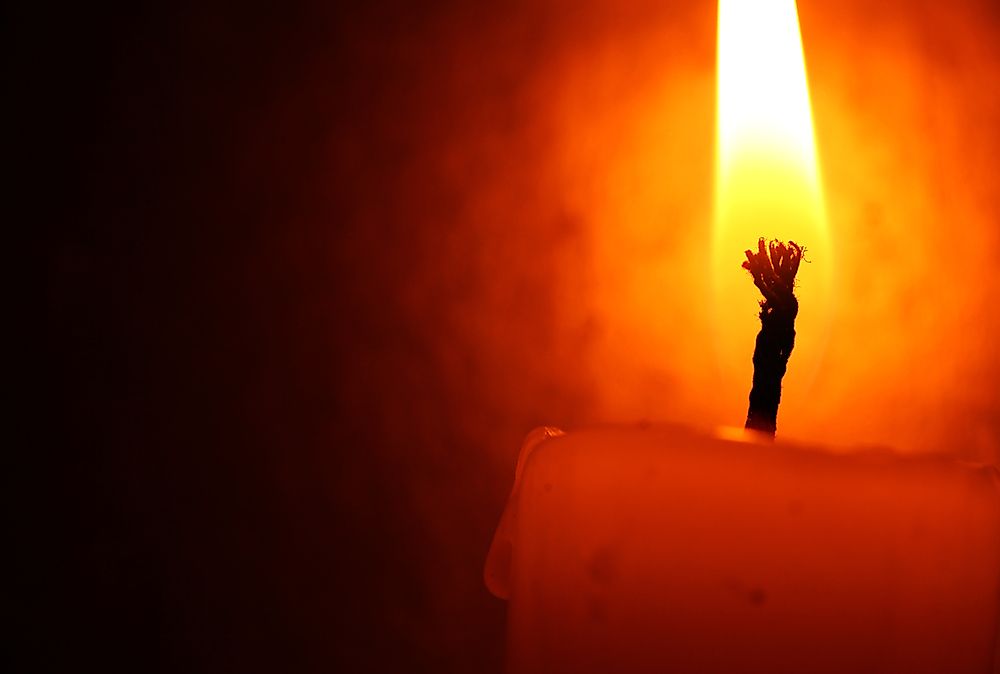What Is A Candle Wick Made Of?

The wick of a candle is usually made of braided cotton which at times includes fine wire as a stiffener. The wick is the part that is lighted in a candle or a lamp and fuel moves by capillarity along the wick to the flame to keep a flame alive. Fuel may include the liquid fuel in a lamp, candle wax that has melted or spirit, which when combined with oxygen will burn to form a flame. A candle consists of a wick lodged in wax or a flammable substance, and it usually has several purposes; it can be used to provide light, for fragrance, and also for occasions such as birthdays, candle-lit dinners, and memorials.
History of Candles
The word candle is derived from the Middle English word candel which means to shine. Before the introduction of candles, oil lamps with wicks were used. Dipped candles were developed by the Romans in around 500 BCE, although the earliest surviving candles dates back to 200 BCE by the Han Dynasty in China. By the Middle Ages, candle-making had become a specialized craft. Beeswax candles were commonly used in church ceremonies as they burned the cleanest. They were too expensive for most of society who burned tallow candles instead. Joseph Morgan patented the first machine to start mass production of candles in 1834; this changed the candle industry and made candles affordable.
Characteristics of a Wick
A wick's features such as; stiffness, diameter, tethering, and fire-resistance will influence the manner in which a flame burns. A wick may include a fine wire, mostly copper, the wire makes the wick firm, and it also acts as a conductor leading the heat downwards which causes the wax to melt easily. Synthetic fibers and paper can also be used in the stiffening of a wick. The lead was used before, but it has been banned in the US and other countries due to risks of lead poisoning. Flat braided wicks are made to be self-consuming. They curl back into the flame as they burn. Wicks are usually pre-treated with flame-resistant solutions, such as salt and borax, to prevent them from being destroyed by the fire.
Different Types of Candles
Wicks of a bigger diameter produce bigger flames which result in a candle melting faster. In candles that are enclosed in cups, also known as tea lights, the wick is tied to a piece of metal. The wax in tea lights can completely melt, and the purpose of the metal is to keep the wick from floating on the wax and burning out before the wax. There are also candles specially made to float on water. These candles have a tether to keep the wick in place and a bottom seal to prevent the wick from seeping water. Some birthday candles have a short stump for a wick, and this makes them burn out faster. Different materials other than cotton and cord can be used to make wicks though this is rare. Materials such as wood have in some instances been used to make wicks.
Importance of Candle Wicks
Candle manufacturers believe that the wick, other than color, shape, or fragrance, is the essential part of a candle. Braided and knitted wicks are of high quality, and they burn longer than loosely twisted wicks. Wicks can be divided into four; square wicks, flat wicks, specialty wicks, and cored wicks. Selecting the right wick for a candle is crucial in ensuring the candle burns correctly and safely.











